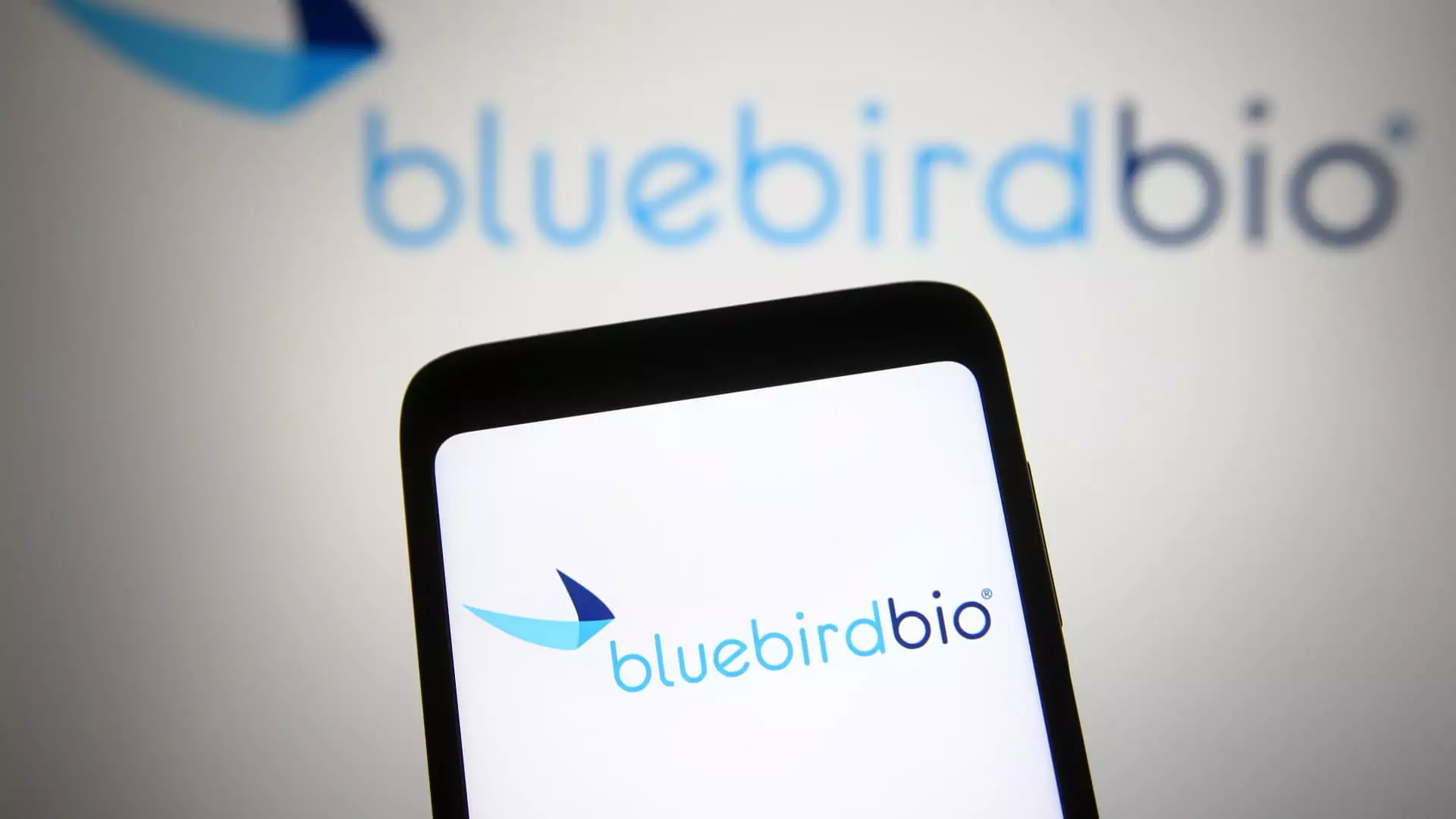Bluebird Bio, once a titan in the biotechnology sector, epitomized the hope and promise associated with innovative gene therapies aimed at curing genetic diseases. However, its recent sale to private equity firms Carlyle and SK Capital for approximately $30 million symbolizes a catastrophic decline from its former stature. From having a market capitalization that soared to nearly $9 billion, the company’s trajectory has taken a stark downward turn, showcasing the volatility within the biotech landscape.
The proposed acquisition offers only $3 per share to Bluebird’s current shareholders, with an additional potential of $6.84, contingent upon achieving sales of its gene therapies reaching $600 million by the end of 2027. This paltry sum is a far cry from its previous share price of $7.04, which plummeted by 40% on the day of the announcement. The stark contrast between the company’s earlier valuations and its current financial state reflects a broader trend in the biotech industry where lofty expectations often lead to disillusionment.
Bluebird’s financial woes are particularly notable given its annual expenditures—often hundreds of millions—while attempting to fund groundbreaking, yet ultimately unsuccessful, treatments. This inconsistency poses questions not just about Bluebird’s sustainability but about the viability of business models underpinning high-risk medical innovations.
Historical Context: The Gene Therapy Promises
For over thirty years, Bluebird Bio championed ambitious gene therapies intended to eradicate debilitating genetic conditions, marking its territory as a leading innovator. However, a pivotal turning point occurred in 2018 when adverse patient reactions to its sickle cell disease treatment raised serious safety concerns. Although Bluebird defended its product, the damage was inflicted, ushering questions about the overall safety of gene-altering treatments.
Moreover, the company’s pricing decisions, such as labeling its beta thalassemia therapy, Zynteglo, at an eye-watering $1.8 million per patient, provoked backlash from European markets. Concerns over affordability hindered its adoption, prompting Bluebird to pivot its focus back to the U.S. market where it aimed to secure approvals for several therapies. Despite achieving regulatory approvals, these products failed to rejuvenate the company’s financial standing, contributing to its eventual sale.
The struggles encountered by Bluebird echo a larger narrative within the biotech field: the challenge of translating scientific breakthroughs into sustainable business models. The case of Vertex’s competing sickle cell therapy, Casgevy, and Pfizer’s recent withdrawal of its hemophilia gene therapy, reflect an industry grappling with unmet expectations and diminishing demand.
This broader context raises significant questions about the future of gene therapy companies. As innovative treatments continue to emerge, their commercial viability remains uncertain. The profitability of developing treatments for rare conditions, especially when faced with the brutal realities of market demands and regulatory frameworks, is an ongoing challenge that many companies may find insurmountable.
Bluebird’s trajectory is rife with lessons for the biotech community. The company’s experience emphasizes the necessity for cautious optimism when it comes to high-stakes medical innovations. Securing regulatory approval, while critical, is merely a step on a much longer path to financial stability and practical application in the marketplace.
Additionally, the need for companies to engage in extensive market research cannot be overstated. Understanding patient demographics, demands, and healthcare systems can prevent missteps like those that plagued Bluebird. As the field evolves, investors and entrepreneurs must adopt a balanced view of potential rewards against inherent risks, ensuring a more sustainable approach to biotech innovations.
The sale of Bluebird Bio represents not merely the fate of one company but a cautionary tale about the unpredictable nature of biotech ventures. While the promise of gene therapies remains tantalizing, Bluebird’s ordeal reveals a landscape fraught with peril. As the market awaits the next course of action from new ownership, the broader implications for gene therapy’s future cannot be ignored. The journey from a pioneering firm to a troubled asset underscores the complexity of transforming groundbreaking science into beneficial and viable healthcare solutions.

